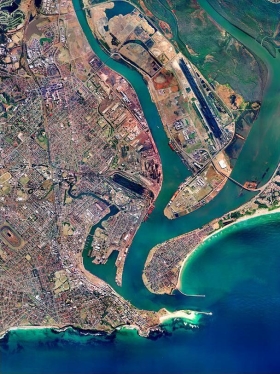NSW Treasurer Mike Baird has said he was pleased with the response from potential bidders for the long-term lease of the Port of Newcastle following the close of Expressions of Interest.
Mr Baird said suitably qualified parties would now be invited to participate in a competitive bidding process for the port, which is expected to conclude by mid-2014.
“The market response to the Port of Newcastle reflects the confidence we have seen in the sale and lease of other State-owned assets under the NSW Liberals & Nationals Government,” said Mr Baird.
Mr Baird said if the transaction was successful, $340 million of the proceeds would be directed towards the revitalisation of central Newcastle, to which the Government has already committed $120 million.
Mr Baird said public access to the port would not change as a result of the lease, and existing regulatory oversight in areas such as price monitoring and the environment would remain in place.
Opinion: Decision to prevent a container terminal at Newcastle is economically destructive
Greg Cameron
There will be ”immense and lasting benefits” for the NSW economy from the sale of a long term lease to the Port of Newcastle, The Hon Mike Baird, NSW Treasurer said, when announcing a ”pleasing response from potential bidders”.
However, the decision to prevent a container terminal at Newcastle is immensely damaging.
Building a freight rail bypass of Sydney and railing containers between a Newcastle container terminal and an Eastern Creek intermodal terminal, would pay for all three.
While the NSW government accepts the need for a freight rail bypass of Sydney, it says construction can wait for another 10 or 15 years before starting.
During this time, the NSW government must build stages 2 and 3 of the Northern Sydney Freight corridor at a cost of $4.4 billion in present value terms. Its purpose is to rail freight 24 hours a day through the heart of Sydney to service Port Botany.
A new freight line is proposed – the Western Freight line – to service Port Botany. This line extends from Chullora to Eastern Creek. It is likely to cost up to $1 billion. But a freight rail bypass of Sydney would remove the need for both projects – saving at least $5 billion.
A container terminal at Newcastle would enable northern regions of NSW to have cost-effective access to a container terminal for the first time. It is too costly to truck containers, or their contents, between Port Botany and Newcastle. Moreover, any economy with export aspirations must have access to a container terminal: without it, a region is unable to engage in international trade in anything but bulk commodities, such as coal.
Northern NSW will permanently suffer for having no effective access to a container terminal.
Preventing a container terminal at Newcastle means a three-times increase in truck movements between Port Botany and western Sydney by 2030 – from 850,000 in 2012 to 2.6 million.
A container-truck carries two TEU containers on average. One ”forty-foot” container is two TEU and weight 4 tonnes. Every time two TEU are trucked the added weight is 4 tonnes (5 tonnes if there are two ”twenty-foot” containers). When there are 2.6 million truck movements, the unnecessary weight carried is 10.4 million tonnes. To carry 10.4 million takes at least 350,000 wasted truck movements.
Using Sydney’s freight rail capacity for passengers instead of freight and using a freight rail bypass to carry intra-state and inter-state freight, will save around $1.6 billion a year by 2028.
In light of these facts, what are the ”immense and lasting” benefits from government policy of preventing a container terminal at the Port of Newcastle?






